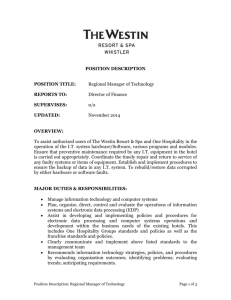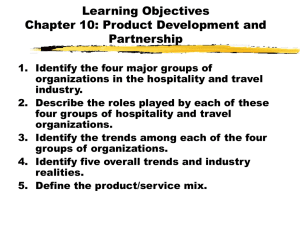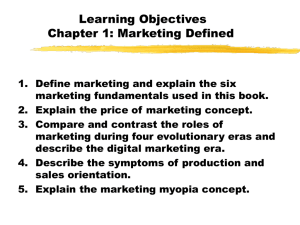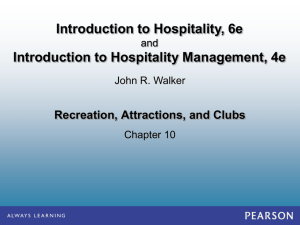Marketing Hospitality and Travel Services - Delmar
advertisement
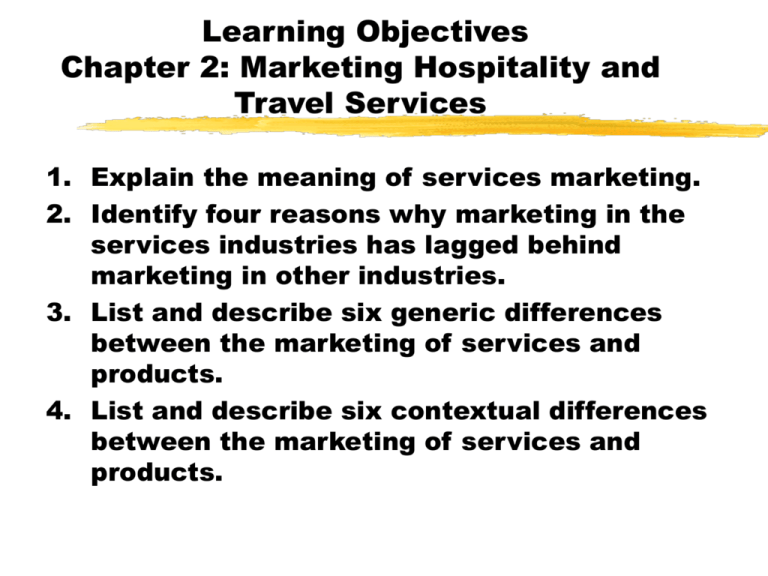
Learning Objectives Chapter 2: Marketing Hospitality and Travel Services 1. Explain the meaning of services marketing. 2. Identify four reasons why marketing in the services industries has lagged behind marketing in other industries. 3. List and describe six generic differences between the marketing of services and products. 4. List and describe six contextual differences between the marketing of services and products. Learning Objectives Chapter 2: Marketing Hospitality and Travel Services 5. 6. 7. List and explain eight specific differences affecting the marketing of hospitality/travel services. Explain five unique approaches required in hospitality and travel marketing. Identify three unique relationships among hospitality and travel organizations. Services Marketing A concept based on a recognition of the uniqueness of all services; it is a branch of marketing that specifically applies in the service industries. Four Reasons Why Services Marketing Has Lagged Behind Other Industries 1. Marketing terms and principles were defined for the manufacturing industry. 2. Parts of industry have been highly regulated. 3. Industry is dominated by small businesses. 4. There has been an historical tendency for technical-and operations-oriented people to create and manage businesses. Six Generic Differences 1. Intangible nature of services 2. Production methods 3. Perishability 4. Distribution channels 5. Cost determination 6. Relationship of services to providers Six Contextual Differences 1. 2. 3. 4. Narrow definition of marketing Lack of appreciation of marketing skills Different organizational structures Lack of data on competitors performance 5. Impact of government regulation and deregulation 6. Constraints and opportunities for nonprofit organizations Eight Specific Differences of Hospitality and Travel Services 1. 2. 3. 4. Consumed within short time periods More emotional and irrational buying appeals Greater importance of managing evidence Greater emphasis on stature and imagery Eight Specific Differences of Hospitality and Travel Services 5. 6. 7. 8. More variety and types of distribution channels More dependence on complementary organizations Copying of services easier More emphasis on off-peak promotion Five Unique Approaches Required in Hospitality and Travel Marketing 1. Use of more than 4 Ps 2. Greater significance of word-of-mouth advertising 3. More use of emotional appeals in promotions 4. Greater difficulties with new-concept testing 5. Increased importance of relationships with complementary organizations Three Unique Relationships Among Hospitality and Travel Organizations 1. 2. 3. Suppliers, carriers, and the travel trade The destination mix concept Visitor and resident interaction Industry Organizations Suppliers Travel Trade Carriers Destination Marketing Organizations The Destination Mix Attractions and events play the pivotal role Attractions and Events Transportation Infrastructure Facilities Hospitality Visitor-Resident Interaction Residents Visitors


